4. BioChromes¶
Natural Dye¶
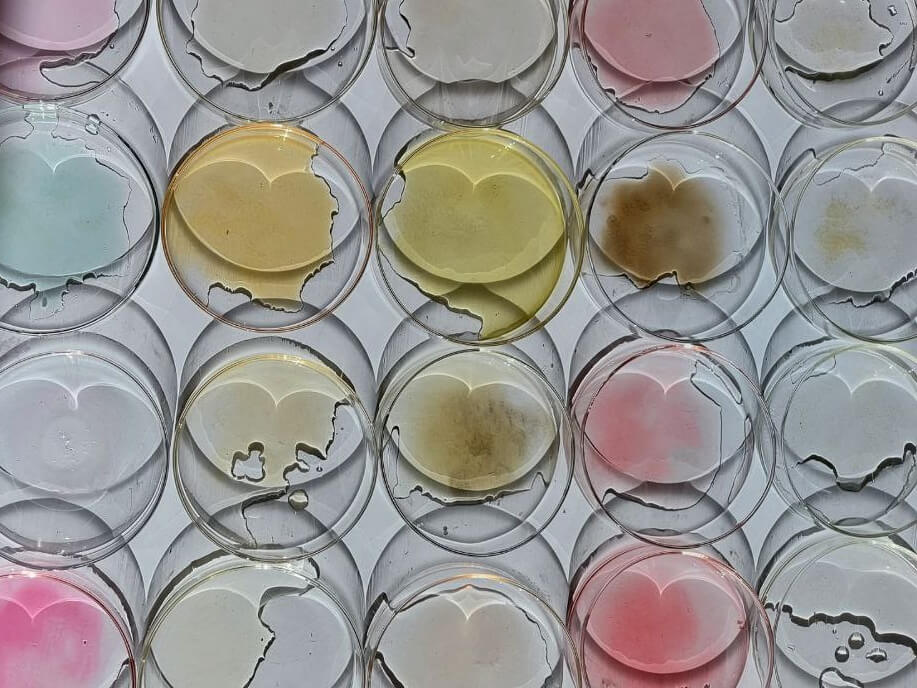
This week was a colorful one! We begin it with many experiments with natural dyes, varying from the type of the fabric used and also to changes in the PH or other modifiers leading to different colors and results.
References & Inspiration¶
The first step when starting a new week was as always browsing through the Fabricademy participants of last years. There are pages of Laura Flores and Patty Jansen, which are documented very simple and easily, and allow an understanding of the subject and the workflow of this week.
Thanks to the lecture given by Cecilia Raspanti on BIOCHROMES and her tutorials we started to experiment on creating colors.
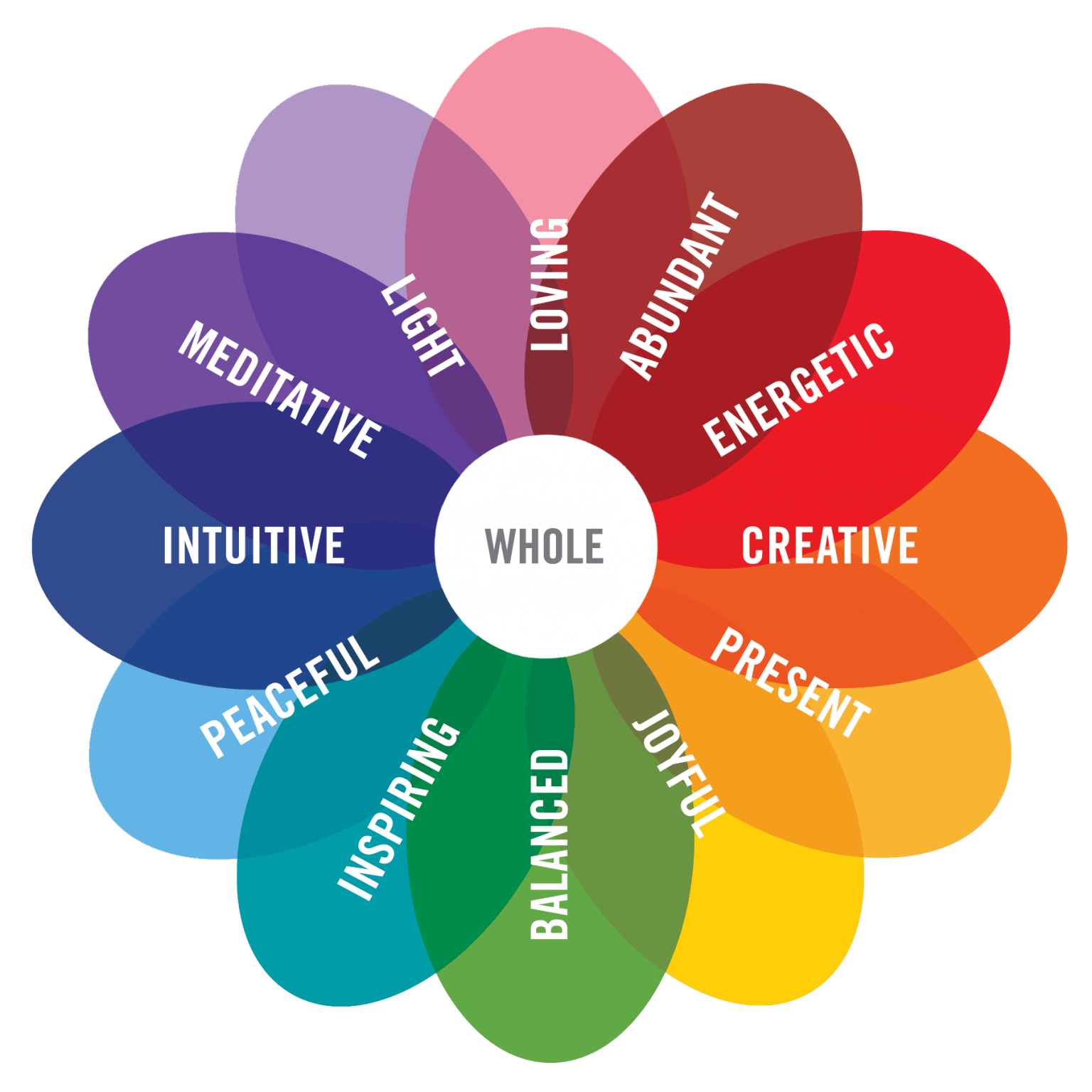 There is a theory that every color has its influence on our behavior. Here are some characteristics (moods) that are attributed to each color in the chromatic spectrum.
Colors are a plastic medium that not only visual artists operate with. From classical painting to immersive art, colors play an important role in our sensations and perception of the world around us.
There is a theory that every color has its influence on our behavior. Here are some characteristics (moods) that are attributed to each color in the chromatic spectrum.
Colors are a plastic medium that not only visual artists operate with. From classical painting to immersive art, colors play an important role in our sensations and perception of the world around us.
The series of Victoria Vi-prada's Color Therapy consists of 16 works which reflect the photographer's personal experience during a period of psychological distress. The artist interacts with the world through the lens of a subjection study of color, and found rebirth in dead autumn. The search for color and the artist's contact with nature became a crucial stage for her recovery from the sever psychological impact improperly prescribed medication had on her.
Distorted natural palettes serve as a source of inspiration and are projected onto ephemeral images of female portraits. Using language of impressionism the photographer isolates viewers from the rectitude of reality and immerses them in an atmosphere of color fluidity and personal excitement.
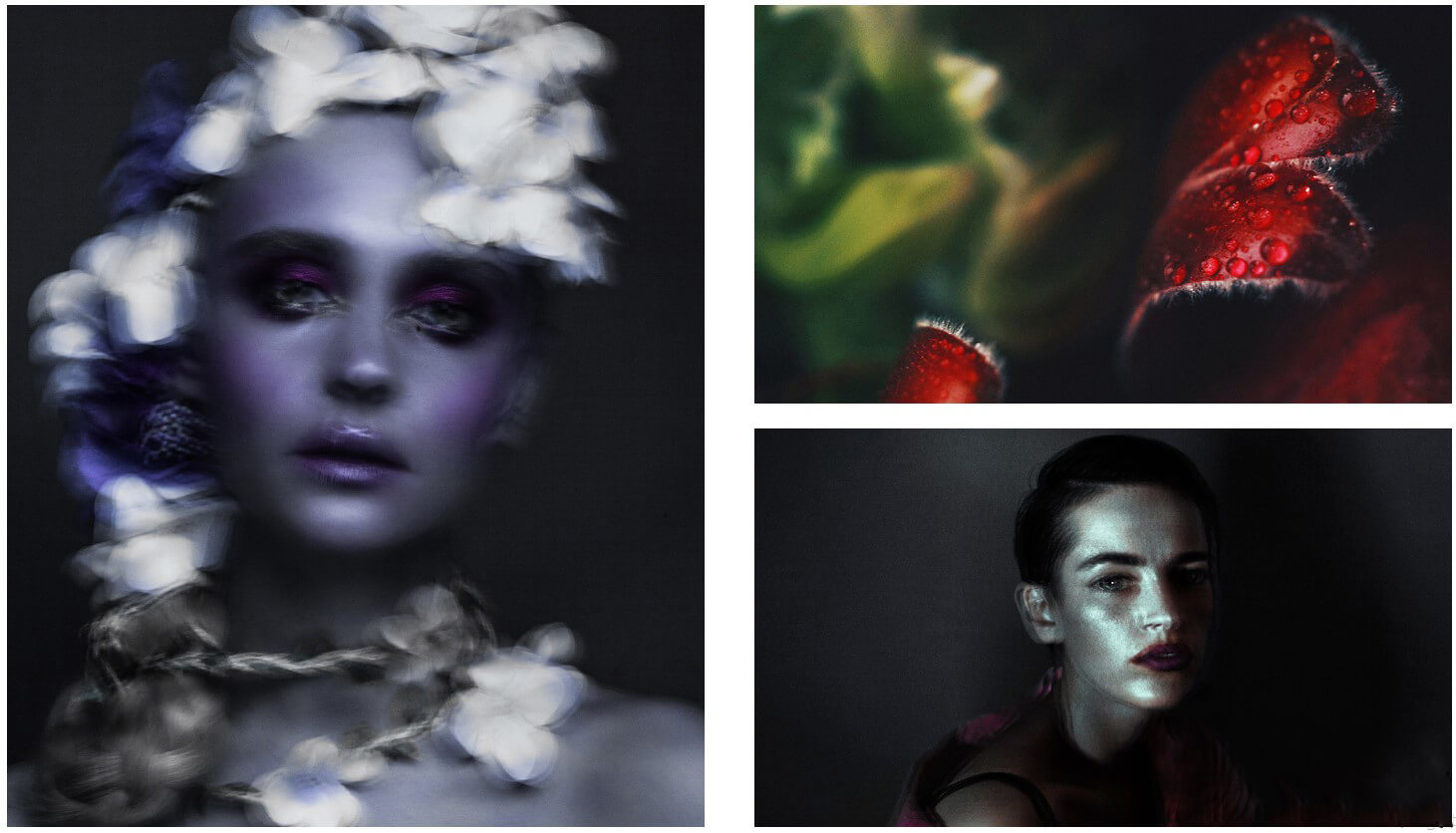
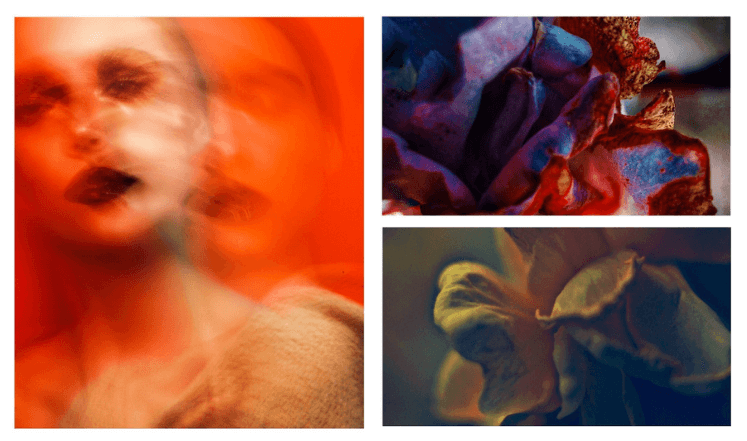
While browsing I found also some beautiful works of Renata Buziak named Biochromes.
Renata Buziak about her work
Nature can be physically and spiritually rejuvenating and has been the main inspiration for my artwork. Biochromes My Garden series focuses on the process of organic decomposition and its effect on photographic material. Images created by this process are formed from the colours of natural, microscopic pigments, the vegetative materials used and the chemical and biological reactions of bacterial decomposition. Preserving these exposures creates an image of the complex interaction between the plants and microbes, producing a spiritually invigorating display of environmental processes, encouraging an appreciation of all elements of nature, and draws our attention to the cycle of decay and renewal.
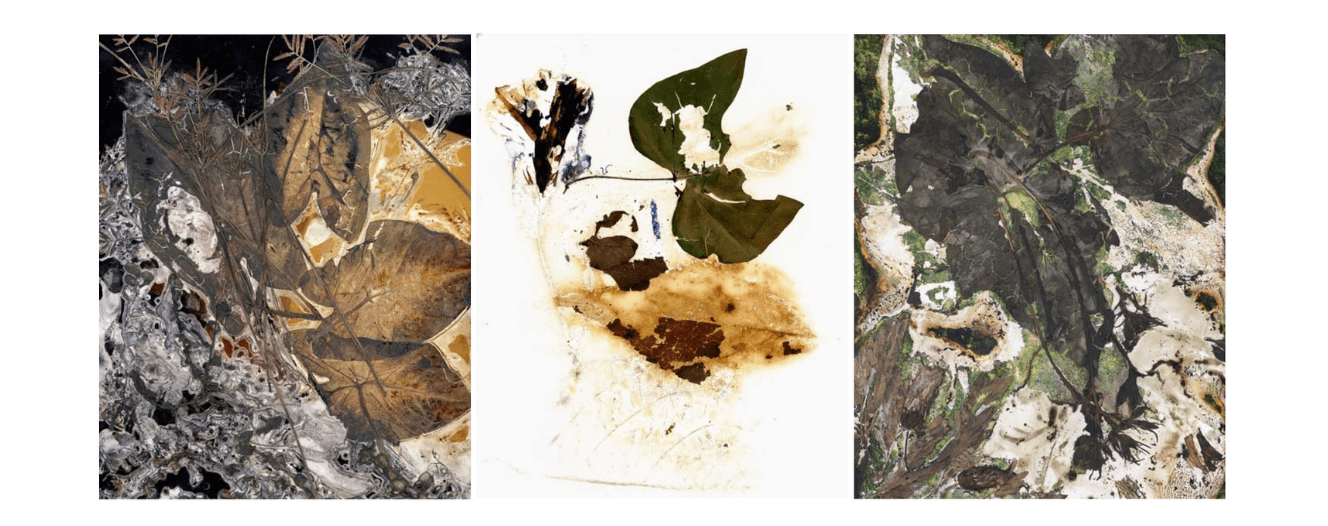
¶
Tools¶
- cooking pots,
- stirring spoon,
- scale,
- strainer,
- cooking stove,
- glass jars,
- coffee filters, etc.
Process and workflow¶
This assignment we started by working in group. We decided to divide the work by colors. So, we drew a sheet each with the color we need to get.
| Participant name | Elena Bannaia | Valentina Frunze | Elena Rotaru | Elena Florea-Burduja | Aliona Raru |
|---|---|---|---|---|---|
| Color | Green | Blue | Yellow | Brown | Red |
| Plants | Mint, Eucalipt | Blueberries, Grapes | Marigold, Turmeric, Saffron | Walnut husks, Onion peels | Red beans, Hibiscus, Paprica |
First, we needed to prepare the fabric. We had 4 types of fabric: unbleached cotton, linen, wool, and silk. We devided the textile in needed parts, weighted them (WoF)and then started to prepare them for the first step which is scouring. For the process of dying we prepared a batch of 5 pieces for each type of fabric that we had. Each fabric was cut in sample pieces for about 7 by 10 cm.

Scouring¶
Scouring is the process in which the fibers are cleaned from any impurities and oil, combining the scouring agents with water.
- Heat up, boil, stir and add fibers
- Remove, strain and rinse.
For the vegetable fibers, unbleached cotton and linen, we needed for this process to use sodium bicarbonate. We added 2 spoons of sodium bicarbonate to 4l of water. For the animal fibers, wool and silk, we wash them in a warm bath with some soap.

Tanning¶
Tanning is not a fondamental step, it helps in the color fastness.
- Soaking it in a liquid containing tannic acid
- Combine water with tannin
- Heat up, simmer, stir and add fibres
- Remove, strain and rinse.
Mordanting¶
Mordant is a substance, typically an inorganic oxide, that combined with a dye or stain is used for fixing the color in the material. We used Alum as our mordant.
- Combine water with Mordant
- Heat up, simmer, stir and add fibres
- Remove, strain
Animal fibers: 15% of WoF of Alum; Plant fiber: 10% of WoF of Alum.
This is why is so important to wheight the fibers right before the start.
DYE Bath¶
After the preparation of the fabric, it's time to start with the dyeing process. In the lab, as a group work, we decided to start with 3 ingredients:
- avocado pits - 2 pits;
- marigold flowers - about 30% of WoF;
- red cabbage - about 40% of WoF.

After this we put the ingredients in a gauze bag (exception for the avocado pits) so that we can later remove the leftovers from the pot easily. We let them simmer and added the textile.
The process would look the following:
- Boil, stir and strain. Remove some pieces of fabric after 30 minutes;
- Remove some pieces of fabric after two hours;
- Remove the rest of the fabric after a night;
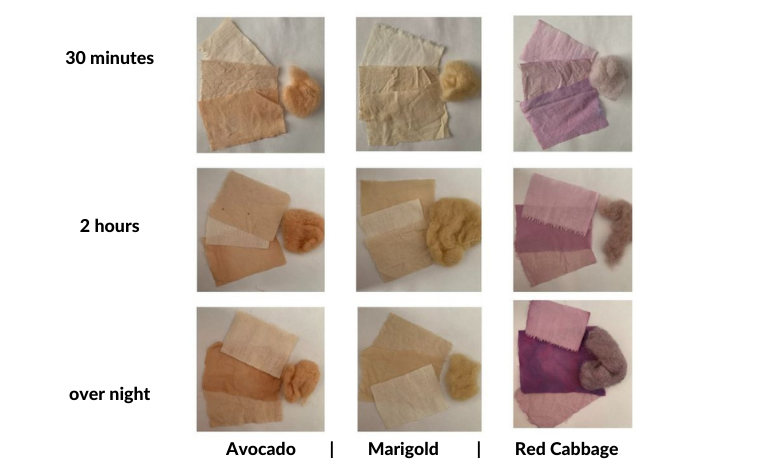

Individual work¶¶
After that we divide the work and everyone took home 2 ingredients to work and create dyes. I got the green color - mint and eucalipt. I started the work by preparing the ustensiles and the water. When the water heated I added the mint and eucalipt to the pot. The ratio was:
The amount of the fabric (all the fibers together) for the each pot was about 50g.

Modifiers¶
Modifiers can be used to change the color of your dye bath. Some color changes are dramatic, other more subtle. The overview below list the different types of modifiers and gives an indictation of what effect they might have.
We followed the Cecilia's presentation and used Vinegar (turning colors more yellowish/giving them a rich glow ), Citrus Acid (turning orange/salmon), Iron (turning warm grey) and Sodium bicarbonate (turning more greenish/blue) as modifiers.
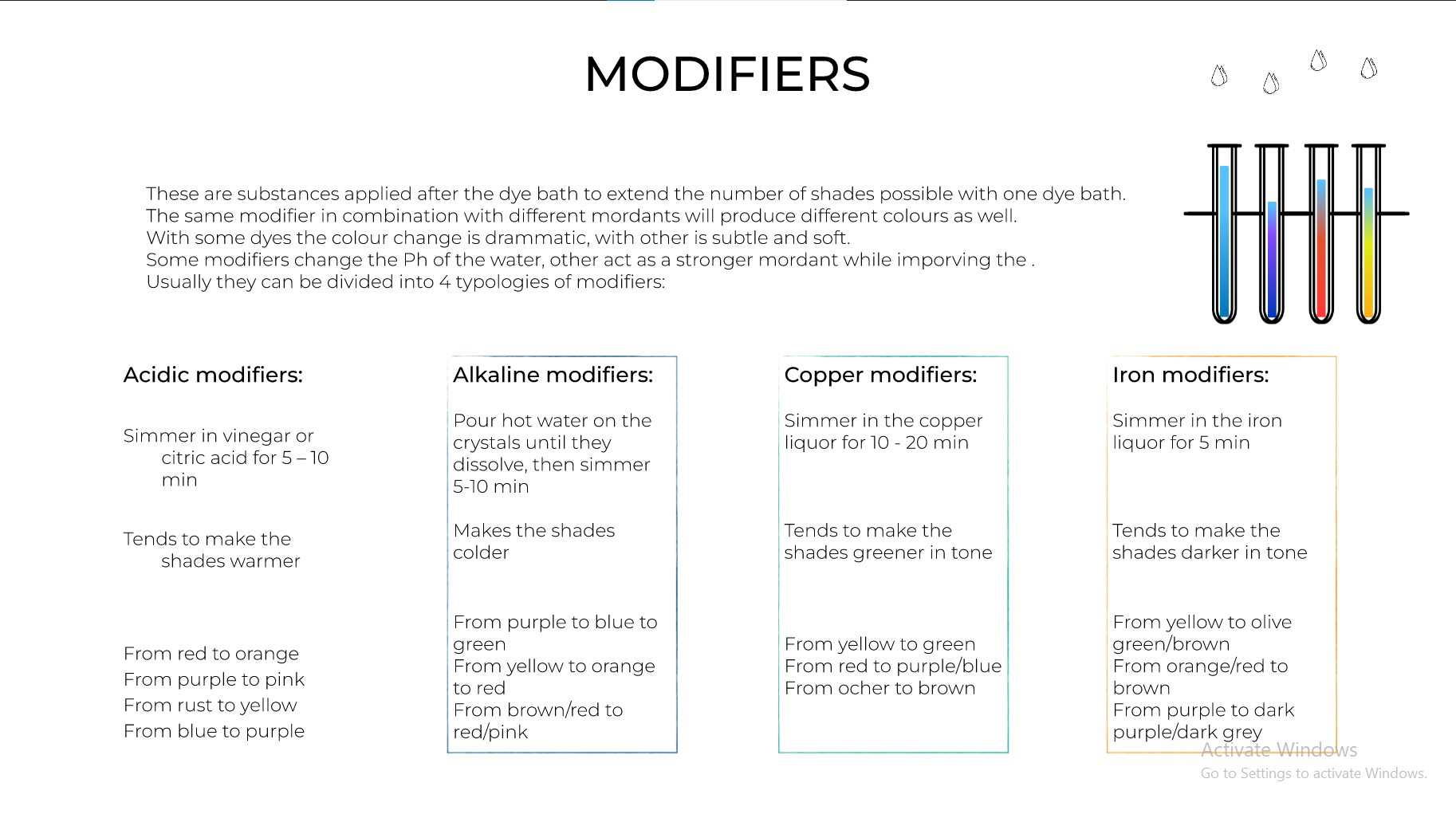
Here is the recipe we used to create the modifiers:3
- 100 ml vinegar + 200 ml water
- 25 gr soodium carbonate + 300 ml water
- 10 gr iron powder + 300 ml water
- 10 gr citric acid + 300 ml water


Silk¶

Wool¶

Linen¶

Unbleached cotton¶

Recycling the dye into pigments¶

Inks¶
For the ink making, we used the 100 ml of left dye and combined with two different vehicle: water and ethanol 96%.4
After mixing and boiling it. We needed a binder, but because we didn't have the arabic gum, we substitute it with gelatin, agar agar and cornstarch.

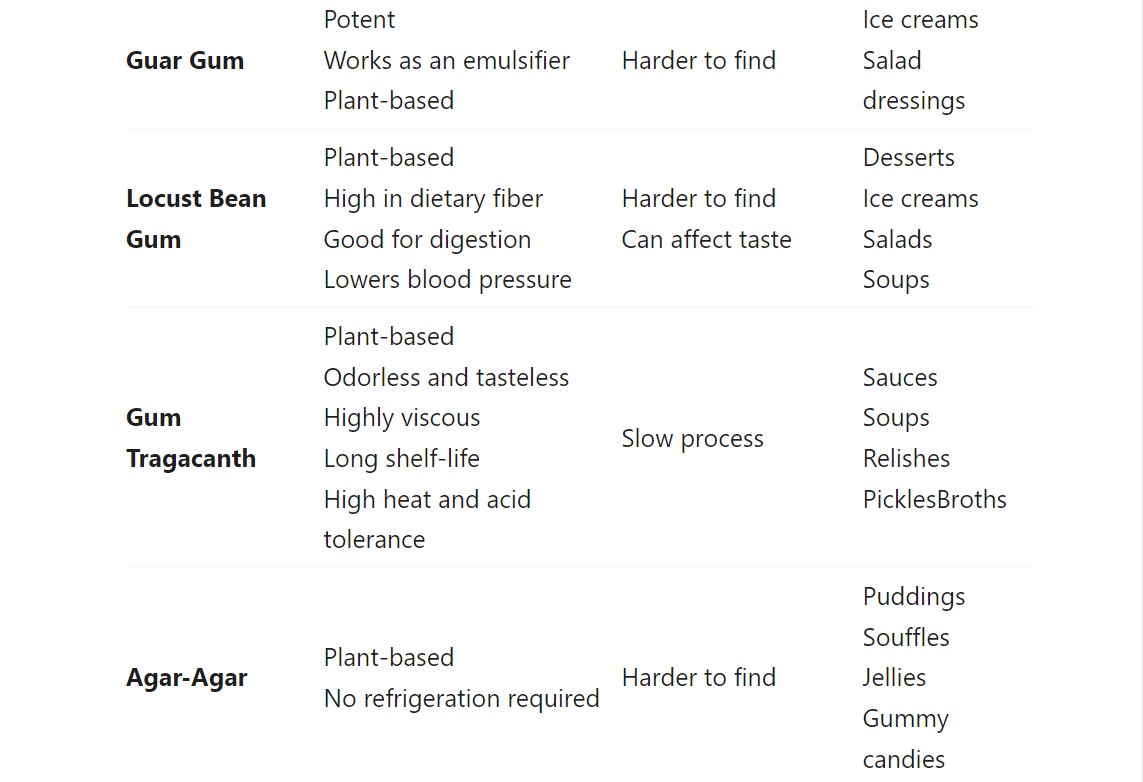
After that, we just played with modifiers. We used citric acid, alum and sodium bicarbonate.
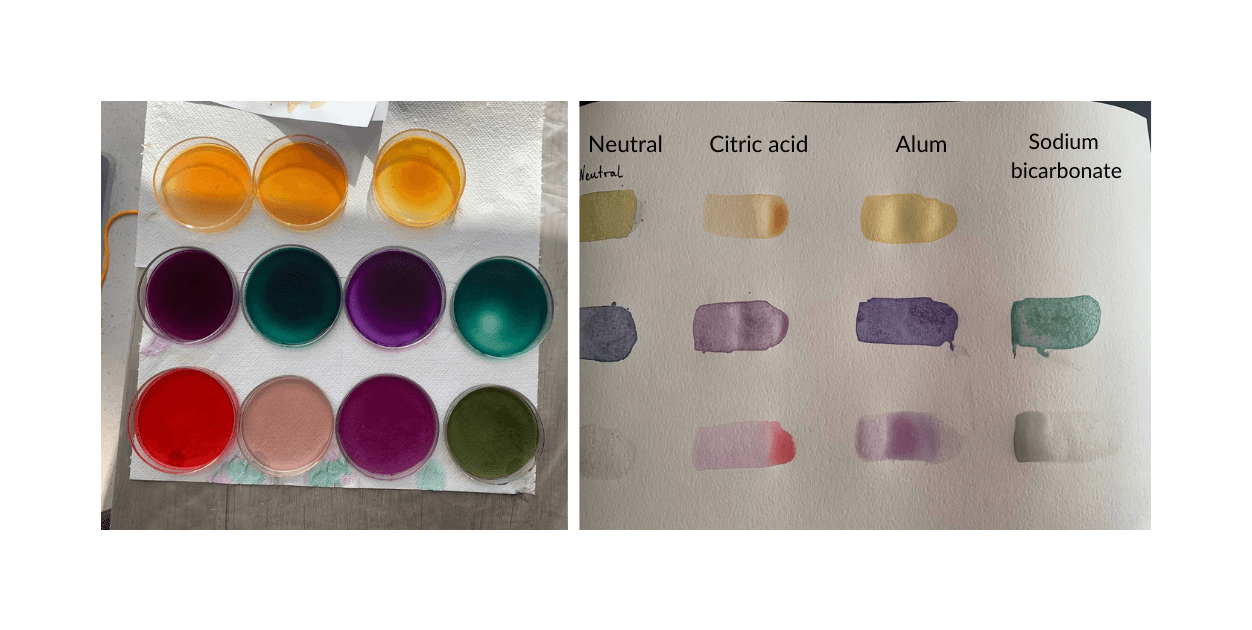
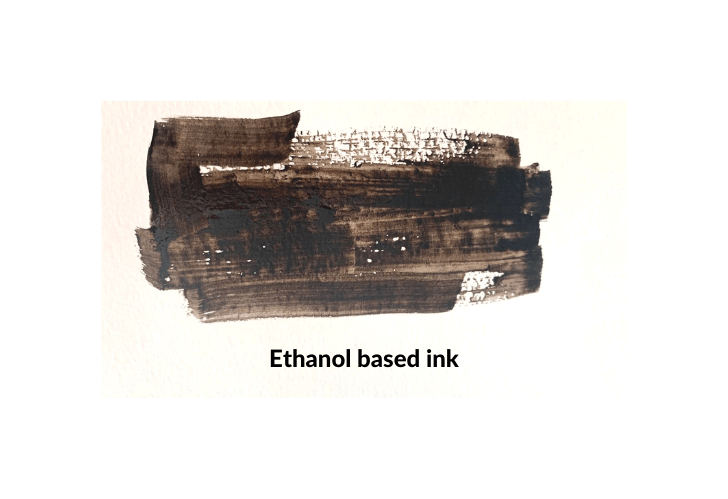
Pigments¶
For obtaining the pigments out of dye we need to follow this process:
- weigh 1 part soda and 2 parts alum.
- pour in 2 different containers hot water that has not come to boil and that will be used to dissolve soda and alum.
- pour the alum into the colored water and slowly pour in the soda to prevent the solution from leaking. The vulcano effect.
- place the coffee filter in another container and let the solution run down, the pigment will settle in the filter.
- let it dry in the open air and collect the dried pigments to reduce them to powder.
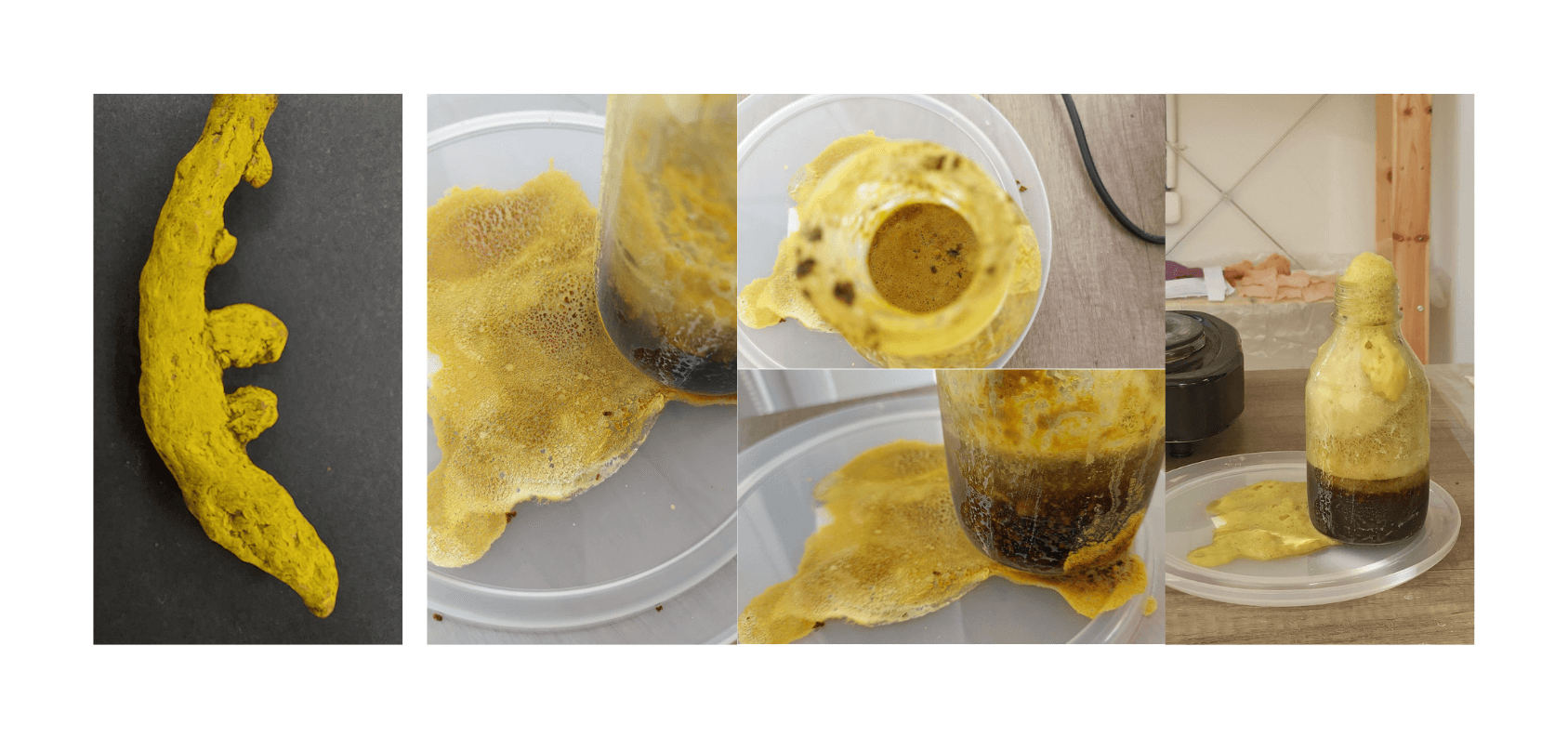
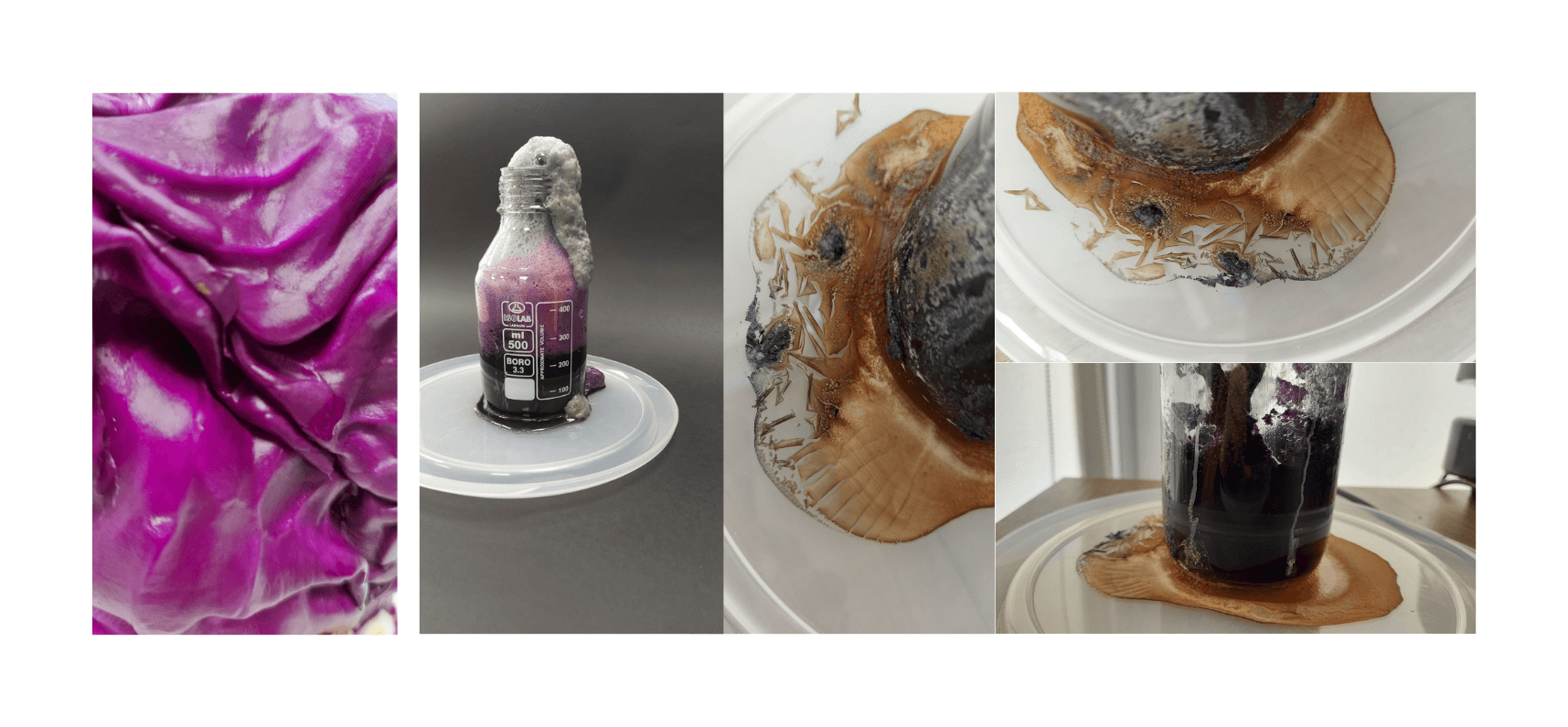
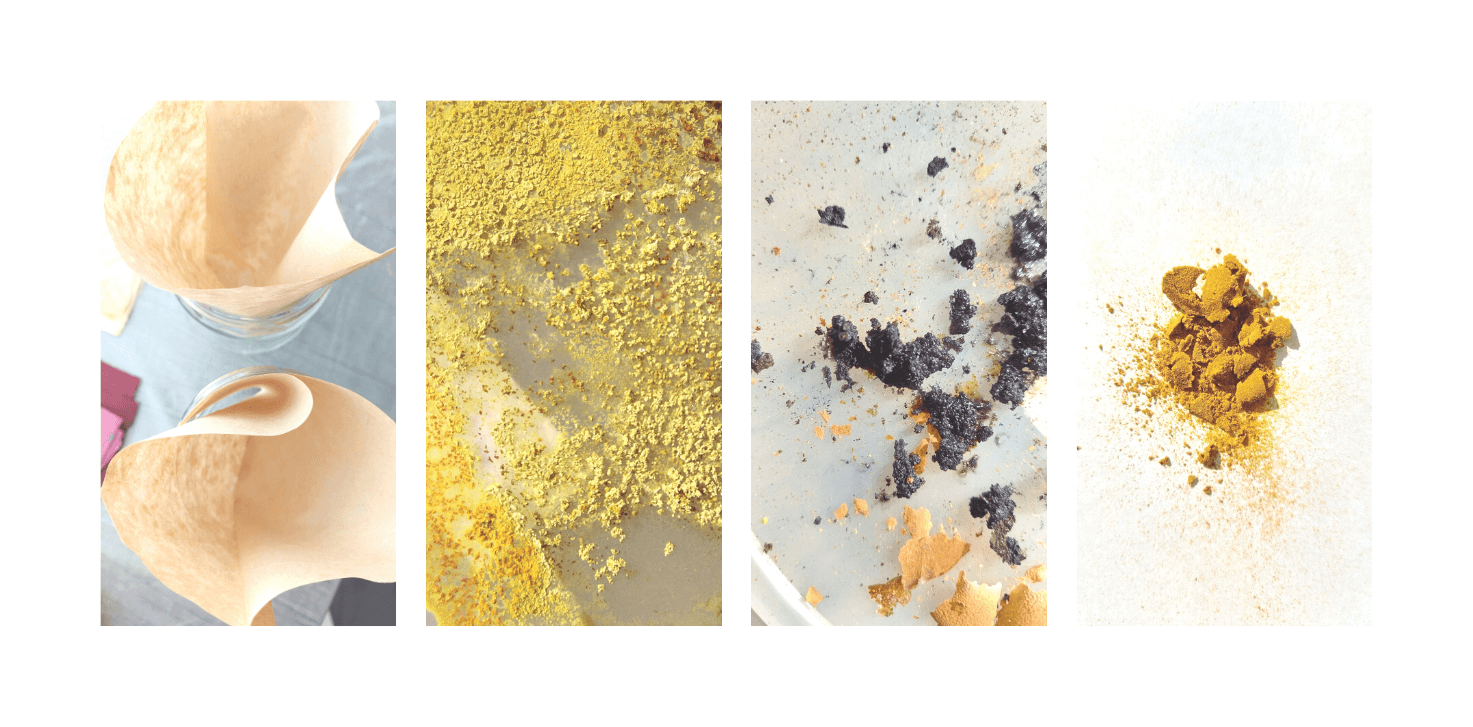
RESULTS¶

 We will continue to work on display of the fabrics in order to create a BioChrome color library at Ziphouse Design Hub.
We will continue to work on display of the fabrics in order to create a BioChrome color library at Ziphouse Design Hub.
Right now I found a template from a student of LE TEXTILE LAB that I would like to addapt for our Hub and to display the results.
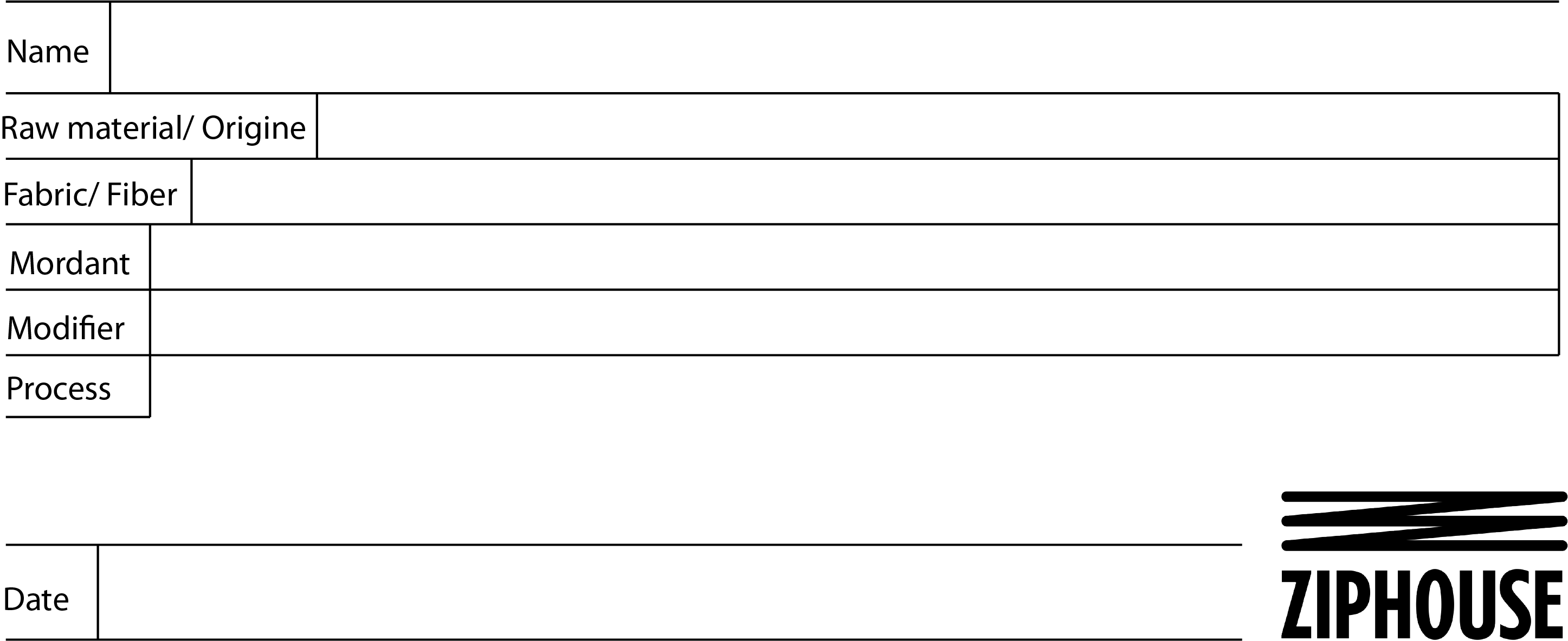 ¶
¶
Bacterial dying¶
Because I didn't had the opportunity to experiment with bacterial dying in our laboratory, due to the dificulty to get the needed bacteria. At least, we shared the experiences of our two collegues that went to the Fabricademy Bootcamp 2022 Geneva Elena Florea Burduja and Valentina Frunze Also, there are beautiful exemples and page to follow that I found on Petra Garajova's documentation.